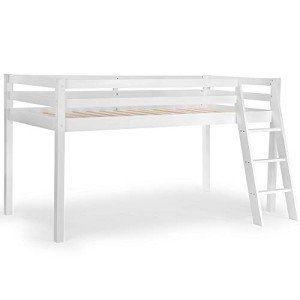A Comprehensive Guide to Children's Bunk Beds: Styles, Benefits, and Safety Considerations
Bunk beds have ended up being a popular choice for families seeking to optimize space and offer a fun sleeping environment for children. With their special style, they provide a creative and practical option for shared bedrooms, playrooms, and even guest lodging. This article checks out the different designs of children's bunk beds, their advantages, safety considerations, and responds to some often asked questions.
The Allure of Bunk Beds
Children's bunk beds are more than just space-saving structures; they are likewise an entrance to daring dreams and imaginative play. Below is an in-depth evaluation of their various benefits.
Benefits of Bunk Beds
- Space-Saving: Bunk beds efficiently use vertical space, making them an ideal option for smaller sized rooms.
- Spirited Design: Many bunk bed designs include slides, camping tents, and themed elements, stimulating imagination and enjoyment.
- Partner Sharing: Bunk beds are best for siblings sharing a room or accommodating sleepovers.
- Versatile Use: Some models can be separated into two individual beds, using versatility as children grow.
- Storage Options: Many bunk beds feature integrated drawer storage or shelves, even more boosting their practicality.
Designs of Children's Bunk Beds
The range of bunk beds readily available today deals with various choices and requirements. Below is an overview of some popular designs.
| Design | Description | Best For |
|---|---|---|
| Requirement Bunk Bed | A traditional style including one bed stacked above another. | Siblings sharing a room. |
| Loft Bed | Similar to a bunk bed without the bottom bunk, enables a work space or play location listed below. | Minimal space for play/desk. |
| L-Shaped Bunk Bed | Two beds organized in an L-shape, frequently with extra sections for storage or play. | Distinct space layouts. |
| Twin Over Full | A twin bed over a full bed, accommodating various sleep needs. | Growing kids and teens. |
| High Sleeper | Stands even greater than a loft bed, usually featuring a desk or play area below. | Older kids requiring more play/desk space. |
| Tent Bunk Bed | Bunk beds with a canopy or tent-like structure, creating a comfortable, enjoyable space. | Active and creative children. |
Key Features to Consider
When selecting the right bunk bed for kids, the following functions deserve considering:
- Material: Bunk beds can be made from wood, metal, or a combination. Each has its unique visual and durability.
- Weight Capacity: Always validate the weight limit of the bunk bed to guarantee it can accommodate your children securely.
- Security Rails: Ensure the leading bunk has tough rails to prevent falls.
- Ladder Security: A properly designed ladder ought to offer easy and safe access to the upper bunk.
- Ending up: Ensure any surfaces are non-toxic and safe for kids.
Safety Considerations
Safety is vital when it pertains to kids's bunk beds. The following guidelines should be adhered to:
- Age Appropriateness: Generally, kids under six years of ages must not oversleep the upper bunk due to security dangers.
- Durable Construction: Ensure the frame and products are solid and can support the weight without sagging.
- Regular Maintenance: Periodically look for loose screws, bolts, or other elements that might need tightening.
- Clear Play Area: Keep the location around the bunk bed complimentary of toys and obstacles to lessen tripping dangers.
Setting Rules for Safe Use
Establishing guidelines for bunk bed use will assist guarantee safety:
- Limit Jumping and Climbing: Children must be advised against leaping from the top bunk and getting on the sides.
- Supervising Sleepovers: Monitor young visitors while they are using the bunk bed for the very first time.
- Educate on Ladder Use: Teach how to use the ladder safely, stressing the significance of dealing with the ladder when climbing or down.
Regularly Asked Questions
1. What age is proper for a kid to oversleep the top bunk?
A lot of producers advise that children need to be at least 6 years old to sleep in the upper bunk. This guideline is designed to alleviate the threat of falls.
2. Can bunk beds be personalized?
Yes, many producers provide customizable options, including colors, materials, and additional functions like drawers or desks.
3. Are bunk beds safe for weight?
Bunk beds have weight limitations, usually varying from 200 to 400 pounds, depending on the model and product. Always examine the producer's requirements.
4. How do I maintain and clean a bunk bed?
Routinely examine for loose parts, keep the bed clean by cleaning down surface areas, and make sure the bed linen is fresh to promote a safe and sanitary sleep environment.
5. Can bunk beds be separated into private beds?
Many bunk beds come with a choice to separate them into two specific beds, offering long-term flexibility.
Children's bunk beds are more than mere furniture; they are a functional, flexible, and imaginative element of a kid's space. With various designs offered and many safety factors to consider to bear in mind, moms and dads can pick the ideal bed that fits their space, fulfills their children's requirements, and instills a sense of experience. By comprehending the advantages, designs, and precaution associated with bunk beds, families can create a delightful and secure sleeping environment for their children. Whether for bunkbedsstore.uk or sisters sharing a space or space-saving options, bunk beds remain a beloved choice for many homes.

